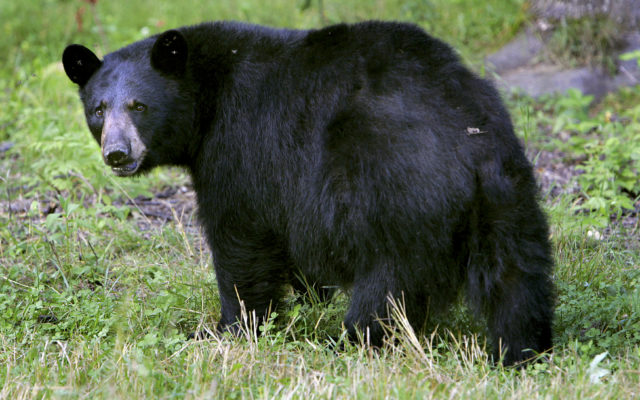
Out-of-staters drove another big year for bear hunting in Maine
By Pete Warner, Bangor Daily News Staff
In a normal year, an abundance of natural foods on the Maine landscape gives black bears plenty to eat, but poses a challenge for hunters.
Simply put, the more berries and nuts, the less likely bears are willing to risk visiting bait and trapping sites placed by hunters.
It turns out that 2021 was not a normal year.
Due in part to the COVID-19 pandemic, more hunters took to the woods again last year. The uptick, spearheaded by nonresident hunters, led to another successful year for bear hunters.
The final numbers are still being calculated, but the 2021 bear harvest rivaled the 3,883 animals taken by all methods of hunting the year before. The 2020 total was the fifth largest harvest since the Department of Inland Fisheries and Wildlife began keeping records in 1969.
Sales of hunting licenses in Maine for all species grew by at least 10 percent during 2021 and at least 3,768 black bears were killed by hunters, according to DIF&W.
“With the pandemic, we’ve seen an increase in hunting effort and there’s a strong correlation between that and the number of bears harvested,” said Jennifer Vashon, the black bear and Canada lynx biologist for DIF&W.
The number of nonresident bear hunting permits rose by almost 10 percent to approximately 5,700 last year, the most since 2005. The number of in-state bear hunters dropped slightly, but still was above the average for the last 13 years.
In 2020, the number of bear hunters in Maine grew to some 12,000, about 20 percent above the annual average of 10,000. Bears are hunted by baiting, dogs and trapping, with a tiny percentage shot during the regular firearms season for deer.
Because the Canadian border has been closed for the last two spring bear hunting seasons there — Maine does not offer a spring season — some folks adjusted their plans and came to Maine for the summer/fall hunt, Vashon said.
It’s unclear whether the changes forced by the pandemic may be the norm.
“It’ll be interesting to see what 2022 brings, if we continue to see increased interest in hunting in Maine,” Vashon said.
Non-residents have been more successful bear hunters because they typically hire guides and spend up to a week in the stand. In-state hunters are less likely to enlist the services of a guide or take as much time to hunt.
Vashon said the 2021 harvest falls in line with DIF&W’s management plan for black bears. The success came on the heels of a 2020 campaign in which 3,883 bears were taken amid a poor year for natural food availability. That’s more in line with usual harvest numbers.
DIF&W biologists and crews are in the field this week doing annual den visits at sites in northern, central and eastern Maine. Those investigations involve checking the health of the hibernating bears, determining year-to-year survival, and counting yearling cubs and litter sizes.
Plentiful food during 2021 should mean bears are healthier than a year ago, when they went into their dens stressed or weakened by reduced access to natural food.
“When we go to the den, we look at the weight and body condition of our bears and that also is an indicator of natural food levels,” Vashon said. “Those first couple of years of life are the toughest on any animal, including black bears, in the wild.”
Biologists also fit some female bears with GPS collars, enabling them to track their activity and mortality. However, precautions taken because of the pandemic have hampered DIF&W’s ability to do spring trapping and collaring each of the last two years.